Ghada* was 15 when she fell pregnant with her third child.
For three years, she had been married to an older man – a man her father had paired her with out of perceived necessity.
‘My family is poor,’ she explained. Her father ‘accepted the first proposal for the marriage that came to him, not only for me but for my sisters, not caring that we were only children’.
Child marriage existed in Yemen before the civil war. But years of bitter fighting have exacerbated the issue. Famine looms over the population as the ‘fortunate’ survive on bread and water. For families like Ghada’s, children are an impossible expense.
And so, Ghada was married at 12. Within a year, she gave birth to a baby girl. Her husband, who wanted a son, abused her and forbade her from leaving the house. She was only allowed to see her family when she delivered her second child, a boy.
Ghada pleaded with her father to let her come home. But the family could not afford to feed more people. She went back to her husband and fell pregnant for a third time.
Seeing no way out, Ghada tried to poison herself with pesticide stolen from her husband. She was rescued by her sister-in-law, but still could not return home. It seemed her life had been decided for her.
Ghada’s story is not unique. Child marriage does not belong only to Yemen, but festers in countries ravaged by war and instability.
Around the world, hundreds of millions of girls have their own stories of abuse and neglect, bound to men often much older than themselves as a result of trafficking, cultural norms or, indeed, because there are no clear alternatives for a better life.
In the time it takes to read this sentence, another child, somewhere in the world, will have been married.
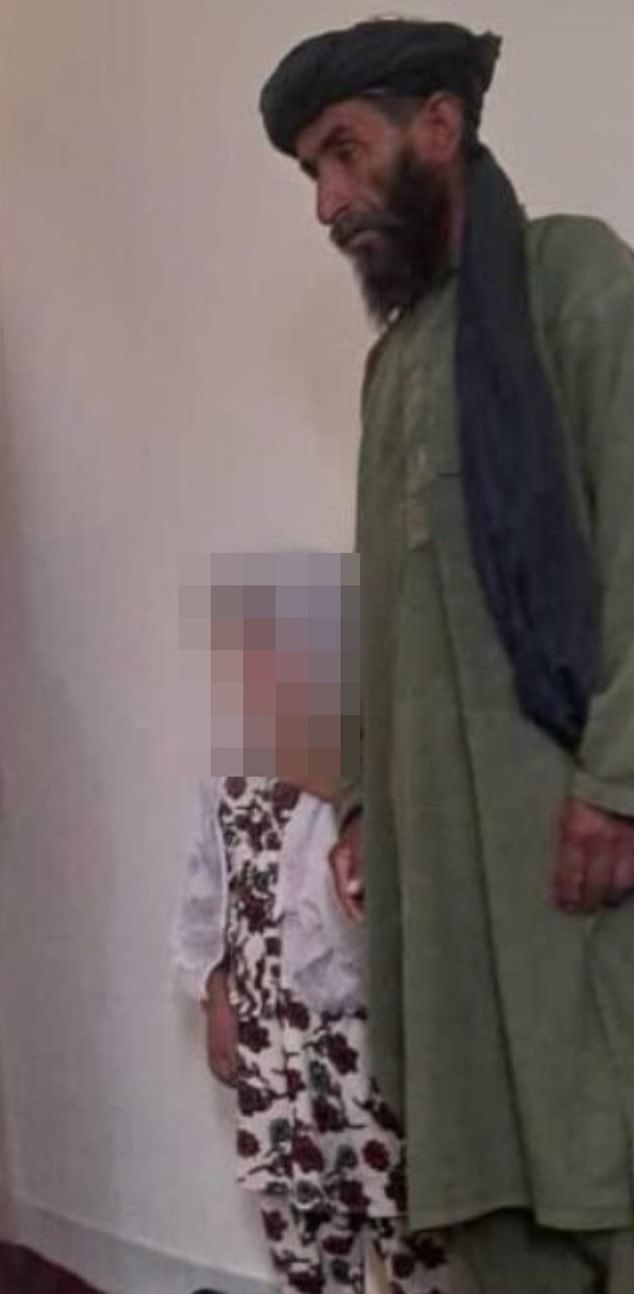
A six-year-old girl was allegedly forced to marry a 45-year-old man in Afghanistan after she was given away for money. The haunting photo of an older man and a little girl standing together horrified even the Taliban, who intervened with the union.
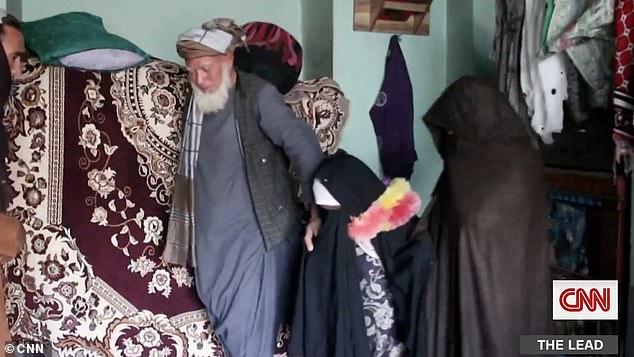
In the same year as the Taliban came to power, after the US’ heavily criticised exit, a nine-year-old girl who was sold by her father to a 55-year-old man as a child bride was rescued by a charity. Parwana Malik (centre) was sold for the equivalent of £1,600 in land, sheep and cash to a stranger named Qorban (left) so her father Abdul Malik could pay for food.
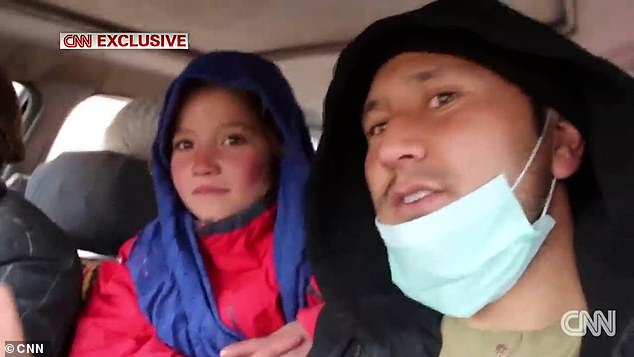
Parwana Malik, a nine-year-old girl (pictured) who was sold by her father to a 55-year-old man as a child bride in Afghanistan was rescued by a charity
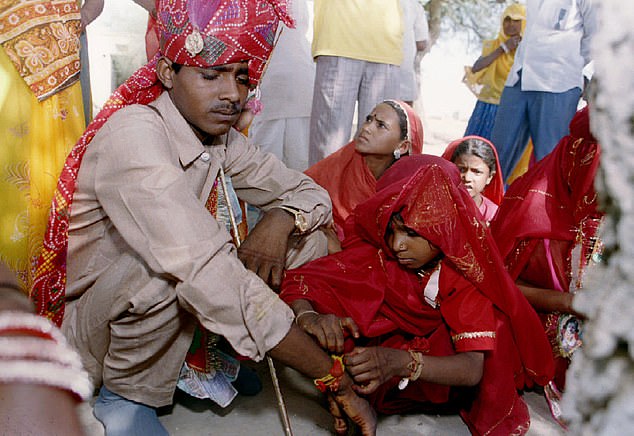
Amlee, a five-year old bride, with her husband, Ashok, 15, during their marriage ritual in Indian desert village Srirampur of northwestern state of Rajasthan on May 14, 1994
Ghada’s story may not be unique. But it is relatively rare in finding a happy ending.
It was the kindness of a neighbour that saved her. She was taken, with her mother, to a UNFPA-supported safe space and referred for psychiatric care, before a lawyer helped secure custody of her children.
In one sense, Ghada was free. But a denied childhood left her at 16 unable to read or write, with no money and no skills.
At one of 51 UNFPA safe spaces, Ghada steadily learned to read and write, and was trained how to sew, offering her the chance of economic independence. She completed her training and was awarded a sewing machine and materials, so that she could start over.
‘Education helped me to become economically independent so I can have my freedom of choices,’ she said. ‘I need to get my children an education so they can choose for themselves in their lives.’
At the time of the report, in 2021, she had moved back in with her father and was able to provide for her family.
Edmund Fitton Brown, the UK’s Ambassador to Yemen between 2015 and 2017, told MailOnline that before the war, it was common for young girls, ‘often below the age of 10’, to be married to men many decades older than them.
He said he recalled hearing of girls as young as eight being married.
‘Part of the incentive was economic, easing financial burdens on the family. Also for protection and to create a family alliance.’
‘All of these drivers have been growing stronger.’
Yemen does not have a minimum legal age for marriage. And Houthi ideology, ‘violent and aggressive’, has only set back rights for women since their 2014 takeover, while limiting the ability of families to object to imposed marriages.
Rarely do families fight back and win. In 2020, an outlier made international headlines, as the mother of a 12-year-old girl, Hind, managed to get a court order to cancel a marriage contract binding her daughter to a 30-year-old prison inmate.
Her mother was threatened and Hind’s siblings were still forced to marriage and made to bear children.
Aid groups, like the UNFPA, are in many cases the only lifeline.
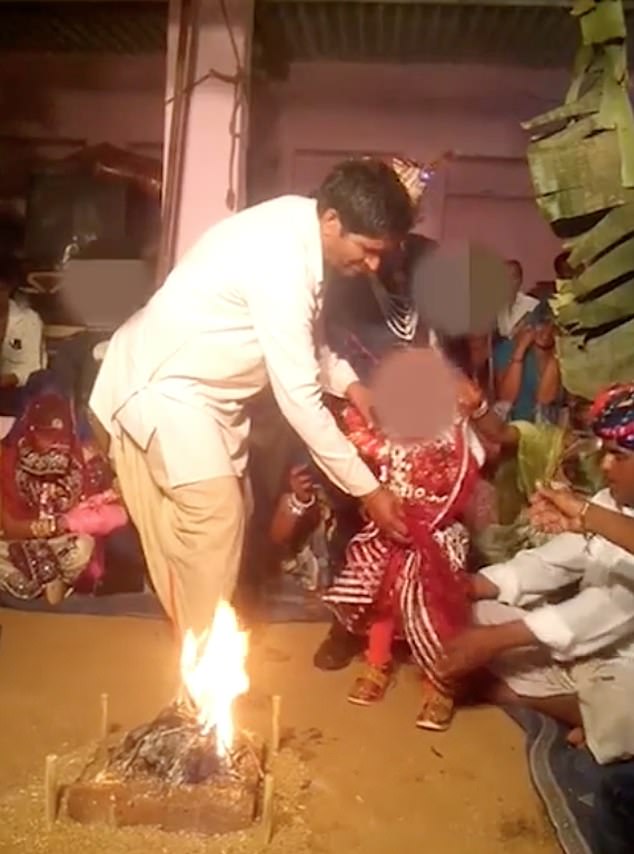
Video taken in Chittorgarh, northern India, showed child brides crying as they were forced to wed

One of the child brides, a five-year-old, is seen dressed in a Hindu bridal dress and is forced to walk around the fire with her child groom, an 11-year-old
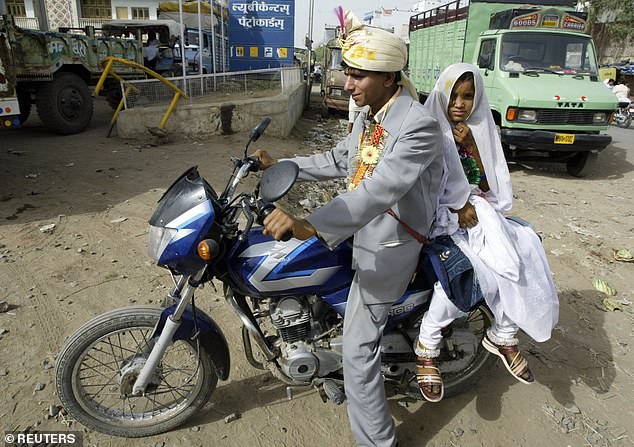
Mamta, 9, rides pillion with her groom Ram Singh, 14, after their wedding in Biaora, in India’s central Madhya Pradesh state, April 22, 2009
The impact of child marriage on the children varies case by case, country by country. But girls who marry or cohabit before the age of 18 are, on average, more likely to experience domestic violence, to drop out of school and miss out on developing skills and relationships beyond the home.
UNICEF says that child brides are more likely to become infected with HIV/AIDS, more likely to have children while still a child, and more likely to die due to complications during pregnancy and childbirth.
There are today more than 650 million women suffering the direct consequences of child marriage. Global figures have declined in recent years, but global instability poses new threats to the lives of children around the world.
In times of conflict, families may arrange marriages for girls, believing it will protect their daughters from violence by strangers or armed groups, and to ease financial burdens on the family – as in Ghada’s case.
In Yemen more than two-thirds of girls are now married under the age of 18. Before the conflict escalated, this was around one in two.
It is not only war that creates the conditions for child marriage, then. Poverty and wider insecurity lead parents to part with their children, either in the hopes of giving them a better life or reducing costs.
Nor is it the case that legislation necessarily offers a watertight solution.
In China, the minimum age for marriage is 22 for men and 20 for women. But UNICEF estimates that there are more than 35 million girls who married before the age of 18.
The effects of China’s infamous One Child Policy (1979 to 2015) still drives this in part. Selective abortions favouring sons have resulted in widespread gender imbalance. Coupled with reduced population growth, this may have spurred a trend towards allowing children to marry.
Poverty squeezes the problem. In vulnerable households, girls can be sold as child brides. Families may also ‘buy’ foreign brides from neighbouring countries. Aidan McQuade, former director of Anti-Slavery International, wrote in 2018 that he had been told that the most popular age of girls for the China ‘market’ was between 13 and 16 years old.
‘These girls typically fetch between $2,000 and $3,000 for ‘three years and a baby’.’
After delivering a child and staying with a Chinese man for three years, he relayed, she may then be sold on to other men in China for ‘similar usage’.
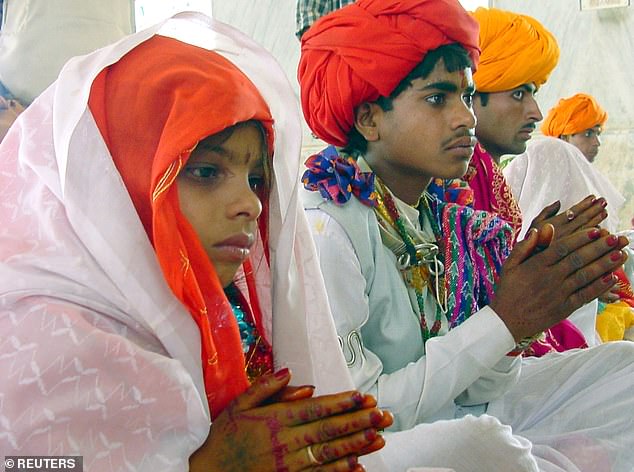
A child bride, Sheela, 8, sits besides her fourteen-year-old groom Daulat Ram (2nd L) during their marriage ceremony at Rajgarh district in the central Indian state of Madhya Pradesh, 2003
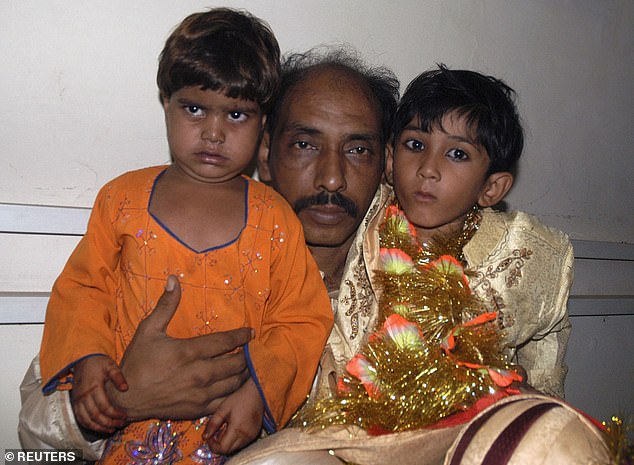
Seven-year-old groom Mohammad Waseem (R) sits with his four-year-old bride Nisha (L) and his father Mohammad Ismil in a police station in Karachi October 31, 2008
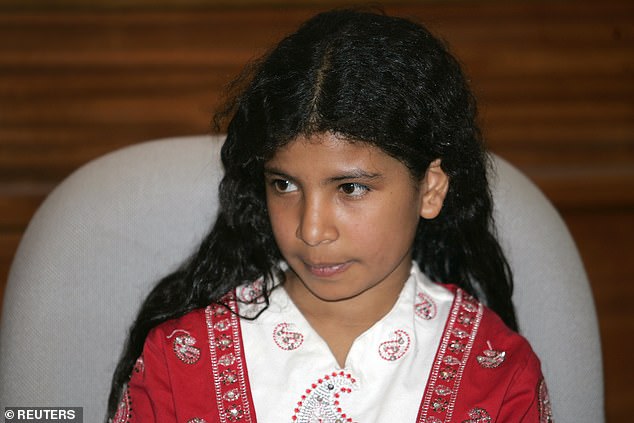
Nine-year-old Nujood al-Ahdal, whose marriage was terminated by a court, attends a news conference with her lawyer Shatha Nasser in Sanaa April 21, 2008
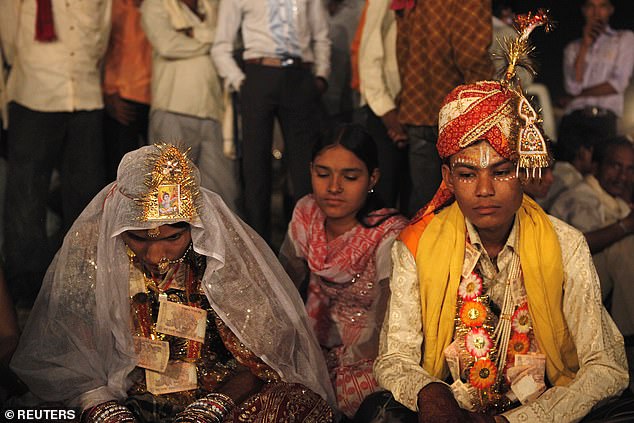
Hemant (R), 16, sits with his 13-year-old newly wed wife Saraswati in a mass marriage outside his village near Kota in the northwestern state of Rajasthan, May 17, 2010
Absolute figures distort the scale. India, with an estimated 216.65 million child brides, has a population of 1.4 billion people. China has slightly less.
By proportion, child marriage is most prevalent in central Africa, stretching from the coast of Mauritania, in the West, through Mali, Niger, Chad, Sudan, Ethiopia and Eritrea and ending up at Somalia, in the East. All are experiencing – or have experienced in living memory – internal instability, conflict or insurrection.
According to UNICEF’s global database (2020), Niger has the world’s highest prevalence: 76 per cent of women were married or in a union before 18. The Central African Republic and Chad both report 61 per cent, Mali, 54.
Prevalence across Asia is much lower, with notable exceptions. In Bangladesh, 51 per cent of girls are married before the age of 18. Nepal reports 35 per cent and Laos reports 33 per cent. Afghanistan reports 29 per cent, just ahead of Iraq on 28.
Afghanistan and Iraq emerged from the War on Terror with very different political systems, but neither have rid themselves of child marriage. In Afghanistan, it was reported this week that a six-year-old girl had been forced to marry a 45-year-old man.
The marriage was allegedly set to take place on Friday in Helmand province before the Taliban stepped in and arrested the father and the bridegroom. Local media reported that the Taliban had said the latter needed to wait until she was nine.
UN Women reported last year that there has been a 25 per cent rise in child marriages in Afghanistan after the Taliban banned girls’ education in 2021. They also said there has been a 45 per cent increase in child bearing across the country.
Earlier this year, Iraq also amended its personal status law to effectively legalise marriage for girls as young as nine. The amendments gave Islamic courts increased authority over family matters, including marriage, divorce and inheritance, allowing clerics to rule according to their interpretation of Islamic law.
Some of these interpretations allow the marriage of girls under the Ja’afari school of Islamic law followed by many Shiite religious authorities in Iraq. Proponents of the changes, which were advocated by primarily conservative Shiite lawmakers, defend them as a means to align the law with Islamic principles and reduce Western influence on Iraqi culture.
The West is not entirely exempt. Romania, which is a member of the European Union and the 35th largest economy globally by GDP (PPP), reports one per cent of girls are married by the age of 15. Seven per cent marry before the age of 18.
The legal age for marriage is 18 years, though people can marry at 16 with parental consent. Poverty, limited education and narrow employment prospects are cited among the reasons for child marriage, especially among Romani girls.
India, ‘the world’s largest democracy’, has a similar problem. The legal age for men to marry is 21, and for women, 18. The legal age for marriage is 21 for men and 18 for women, but poverty, tradition and weak enforcement keep child marriage common.
UNICEF estimates that at least 1.5 million girls under 18 get married in India every years. Nearly 16 per cent of adolescent girls between 15 and 19 were married at the time data was gathered.
Rates have declined in recent years, which the UN agency attributes to the increased literacy of mothers, better access to education for girls, stronger legislation and migration to urban centres.
Both UNICEF and UNFPA have been working together on a Global Programme to Accelerate Action to End Child Marriage, to help address persisting norms and bring together strategies on improving health, education and nutrition to change the lives and opportunities in front of young people.
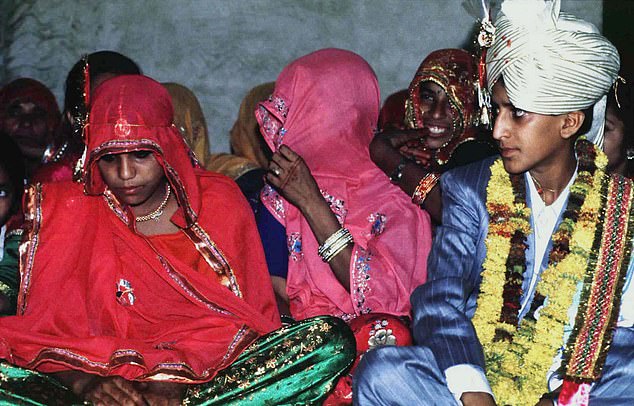
Lalaram, 13, (R) looks at his bride, 11, (L, unidentified) during an illegal child wedding ceremony near Jaipur in the northwestern state of Rajasthan
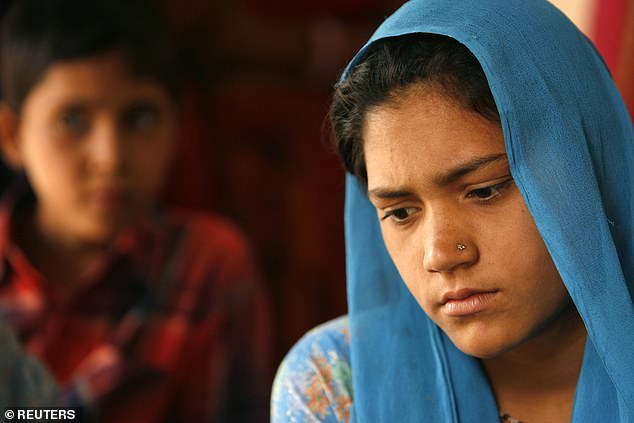
Fourteen-year-old child bride Lalita Saini (R) speaks to Reuters in Jaipur in 2007. She was to go on to live with her 19-year-old husband from a neighbouring village
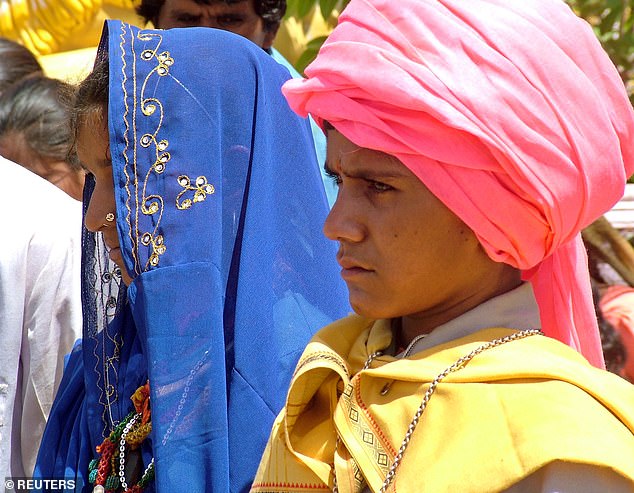
Inder Singh (R), 14, and his bride Ram Bai, 13, stand outside a temple during their marriage near Bhopal, India in 2005
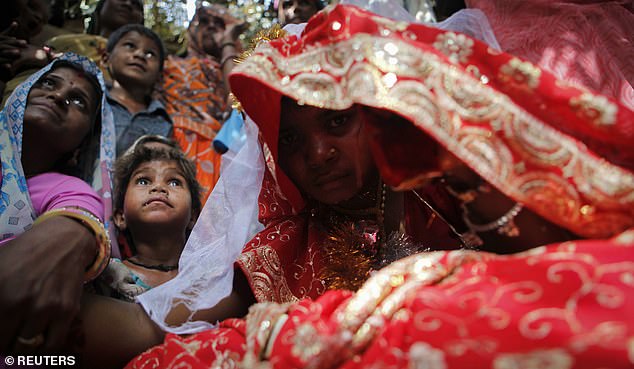
Child bride Krishna, 11, sits during a marriage ceremony at her husband’s home in a village near Kota, located in the northwestern state of Rajasthan, in this May 16, 2010
The groups leading the charge acknowledge that there is no one-size-fits-all solution to ending the problem.
Issues like war, poverty and famine cannot simply be undone by donations, but money does help charities and agencies on the ground to reach and help girls like Ghada.
‘Current funding is nowhere near enough to match the scale of child marriage worldwide,’ Girls Not Bridges acknowledges.
Beyond making peace, creating jobs and providing food, action from international governments is needed to create a firm basis of law – and the means to enforce it.
Still, the immaterial roots in culture call for a much greater commitment to education before the suffering imposed on children can be properly identified, understood and allayed.
* Name changed to protect her identity.












